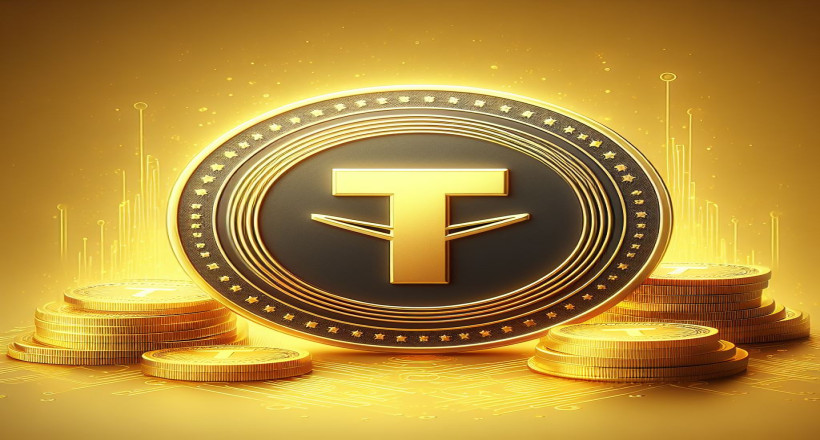
Tether (USDT): A Comprehensive Guide to Understanding the Digital Dollar
Tether, also known as the "digital dollar," is a stablecoin pegged to the US dollar at a 1:1 ratio. This unique feature makes it an effective tool for trading and investing on the blockchain, especially in an environment where price volatility is common and significant.
Tether acts as a bridge between traditional and digital currencies, enabling users to transact with greater confidence in the digital realm. Tether (Tether) and USDT are both names for the same cryptocurrency, and USDT is known as one of the most popular and influential stablecoins in the cryptocurrency market.
Backed by a one-to-one reserve of US dollars, Tether has gained the trust of many users. As a result, it is recognized and valued as one of the most reputable cryptocurrencies with a dollar equivalent value in the cryptocurrency market.
Tether is not the only stablecoin in the cryptocurrency world. Other stablecoins like BUSD, USDC, DAI, and others also exist. However, Tether or USDT is the most powerful stablecoin in the cryptocurrency market.
Who Created Tether?
The stablecoin Tether was first launched by Reeve Collins, Brock Pierce, and Craig Sellars.
How Does Tether Work?
Tether operates as a digital cryptocurrency or "token" that functions on several different blockchains, including the Bitcoin blockchain with "Omni" and "Liquid" protocols, Ethereum, EOS, Tron, Algorand, SLP, and OMG. In cryptocurrency terms, "coins" refer to currencies that have their own blockchain, while "tokens" refer to currencies that are created on other blockchains. Tether is considered a token because it does not have its own independent blockchain and operates on other blockchains.
The company "Tether Limited" claims to hold the equivalent of one US dollar in its reserves for every Tether unit in circulation. This means that the price of each Tether is always equal to one dollar. Tether Limited is responsible for managing and regulating the amount of Tethers in circulation, which is determined by the amount of dollar reserves held by the company.
Tether was initially designed for use on the Bitcoin blockchain, but over time has also gained the ability to operate on other blockchains such as Ethereum and others. Currently, the largest volume of Tether transactions takes place on the Ethereum blockchain.
Differences Between Tether and the US Dollar:
While each Tether unit is worth one US dollar, there are key distinctions between the two:
Advantages and Disadvantages of Tether:
Advantages:
Disadvantages:
Types of Tether
Since Tether is a token and does not have its own blockchain, it is implemented on various blockchains. Here are some of the most popular blockchains that are used more than others:
Applications of Tether in the Cryptocurrency Market
The most important application of Tether in the cryptocurrency market is for storing value and replacing it with fiat currencies. This is especially important in regions that face restrictions on access to traditional banking services for various reasons. In fact, people can use Tether to store and transfer assets.
The credibility of Tether has made it possible to use it as currency on many exchange platforms.
Why Does Tether's Price Fluctuate Despite Being a Stablecoin?
The price of Tether is always equal to one US dollar, and Bitfinex, the exchange that issues Tether, keeps the price stable. However, sometimes we see that this price can be a few cents more or less than one dollar. This happens for three main reasons:
Tether Gold: A Gold-Backed Stablecoin
Tether Gold (XAUT) is a type of Tether stablecoin backed by physical gold. Similar to USDT, which is backed by one US dollar, and EURT, which is backed by one euro, Tether Gold, denoted by XAUT, is backed by one ounce of gold.
In other words, each Tether Gold holder owns the equivalent of one ounce of real gold bullion, identifiable by a unique serial number. According to the Tether Gold website, anyone can view the gold bars associated with their Tether Gold holdings at any time.
Any individual who completes the company's verification process and holds a sufficient amount of Tether Gold can request to receive their physical gold bars. They can then either personally travel to Switzerland to collect the bars or request the company to sell the bars and deposit the proceeds into their account.
Conclusion
In this article, we have comprehensively introduced Tether, its types, and its operation mechanisms. We have also discussed the advantages and disadvantages of using it.
Tether (USDT) is a cryptocurrency designed to provide alternative methods for individuals' online banking transactions and has a stable price. Unlike Bitcoin and other cryptocurrencies, Tether is not decentralized and is operated by a company. This currency has been in the crypto market for a long time and has gained significant acceptance among users, giving it high credibility; however, the internal workings of this currency are not fully transparent, and there is not complete trust in Tether. Of course, no one can deny the advantages of investing in Tether. Almost all cryptocurrency projects carry risks. However, Tether has one very important feature: it protects your investment against market fluctuations.